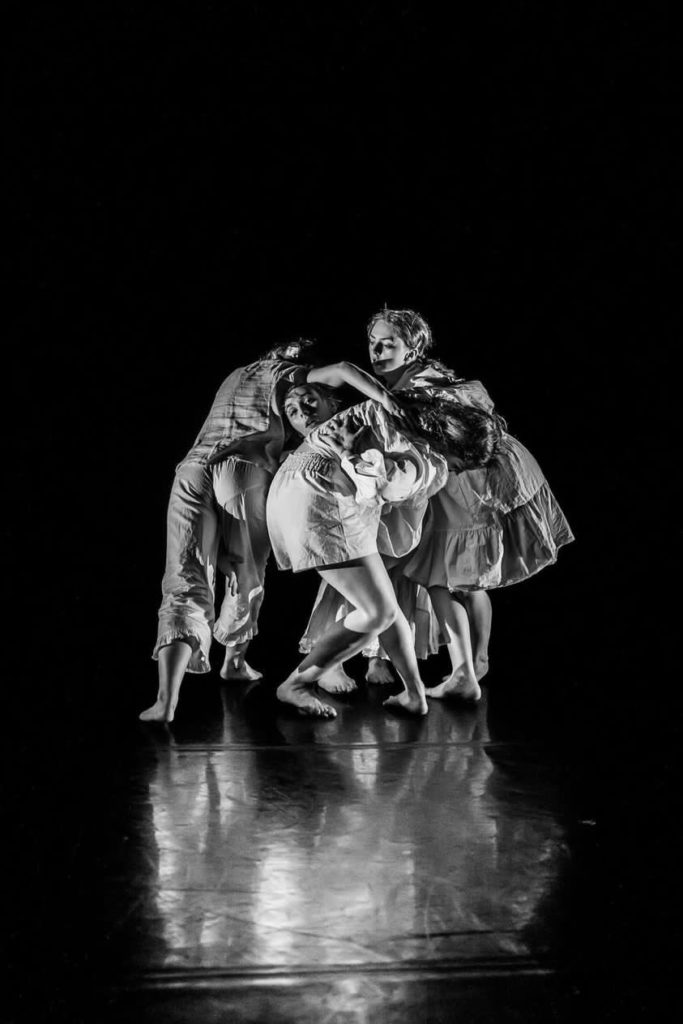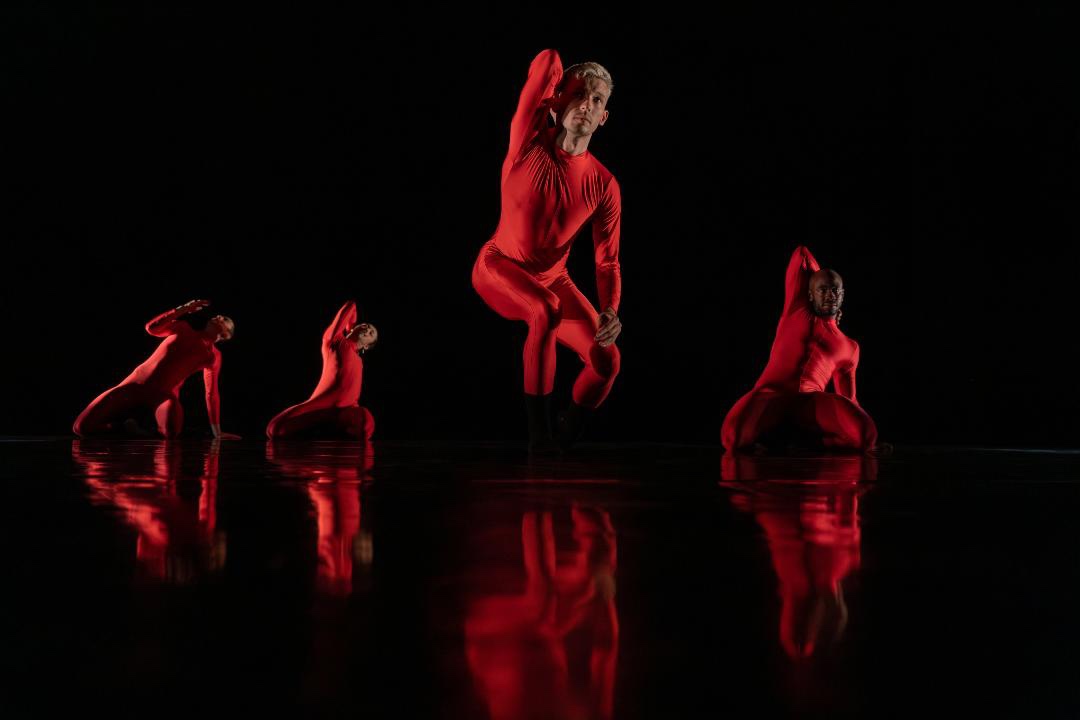I Can’t Take My Body Off by Chewed Pink
Holehead by Oluwaseun Olayiwola
Words by Sarah Lapinsky.
It must have been fate that brought these two pieces to premiere at The Place’s Resolution festival on the same night of June 8th. Either fate or some really excellent programming. I would have a hard time believing this was just a happy coincidence when these two works mirrored each other so beautifully in their explorations of femininity/masculinity, queerness, tenderness/aggression and intimacy. With their own unique movement styles, the works exist in the same world of wonder and curiosity, leading to a rich contemplation of gender expression made even stronger by their comparison.
Up first, I Can’t Take My Body Off tackles ideas of femininity and asks what our bodies are capable of meaning and how that meaning is built. The piece begins with two bodies carefully approaching each other in silence before entering into a wrestling match. Punctuated by the sounds of their grunts, the two performers wearing frilly, white dresses insert surprising moments of tenderness between the aggressive pulling, twisting and dropping of each other. Two more run in to join them and they begin a series of tableaus, demonstrating scenes of quirky aggression entertaining enough to elicit amused giggles from the audience.
After the last black out transition, the four are left kneeling as “Blue Velvet” comes over the speakers. To the iconic 50s tune describing the singer’s love as an object of desire, the dancers brush their shoulders sensually and bite their fingers while also distorting their bodies in back bending contortions and flopping their limbs around in the transitions. In these moments of fracture the unison of the group breaks, as does the image of the flirtatious girl existing for our gaze (did we build that in our heads or did they?).

This theme of distortion continues as two of the dancers enter a competition of out-doing each other building upon a flouncy movement with romantic épaulement to show off their necks and clavicles. This action quickly transforms into an extreme, odd jump complete with energetic grunts until they bourrée and skip to exit. This section recalls the playfully grotesque reminiscent of Mary Wigman’s facial expressions and poses in Hexentanz.
At this point in the piece, these performers have displayed a gorgeous understanding of what they are doing in the work. The piece continues with the slow, peaceful pacing that allows the audience to absorb the smallest moments. I especially appreciated the moment where the performers carry out armfuls of dress-up gowns to plop them on the ground before playing with them. Picking up the dress, will they put it on and play the role of the woman or drop it and crawl on the ground like a slug? This piece does a great job of keeping the audience guessing in this exploration of female relationships to others and the self.
Holehead picks up where I Can’t Take My Body Off leaves off. The audience re-enters the theatre from our interval to find the piece already underway: the stage filled with haze as three dancers in red unitards stare down the audience through their sunglasses and a fourth, sunglasses-less dancer performs phrases in the back. They pass around the glasses, always one without moving on their own, as they pose and watch us sit down, a potentially jarring moment of witnessing being witnessed but definitely an engaging start. Once everyone has settled, the lights dim and a cassette turns over as a dissonant drone sweeps in. The movement is structured and technical and the unitards give the piece a more formal feel. The material includes distorted gestures of love and intimacy and the group intertwines in patterns finding moments of unison as they bound across the stage.
A moment that piqued my interest was when two dancers ceased rolling on the ground and found themselves in a game of rock, paper, scissors downstage right next to the audience. This interaction with the fourth wall is an interesting theme pointing to questions of perspective and illusion even if I could not see who won from my seat.
Patterns and motifs like an elbow lifted in the air to reveal the armpit for the audience are established and built upon, and the aggression and play-fighting similar to the first piece demonstrate meditations on our perceptions of these relationships. The dancers interact with each other without clearly defining their roles or connections to each other, but the ambiguity does not poison the ideas. The piece ends with a duet between two dancers after they have both pulled down an arm of their unitards. The sunglasses return and I must admit that I do have a little trouble understanding what they now mean in this context, but the tender details keep me interested as they begin to struggle and we find black out.
Overall, these two works make great strides in understanding gender through movement. Well-composed and thoughtful, I will be excited to see how they both develop and if we’re lucky, perhaps we will be able to see them together again someday!
Header image by Billy Nisbett.
